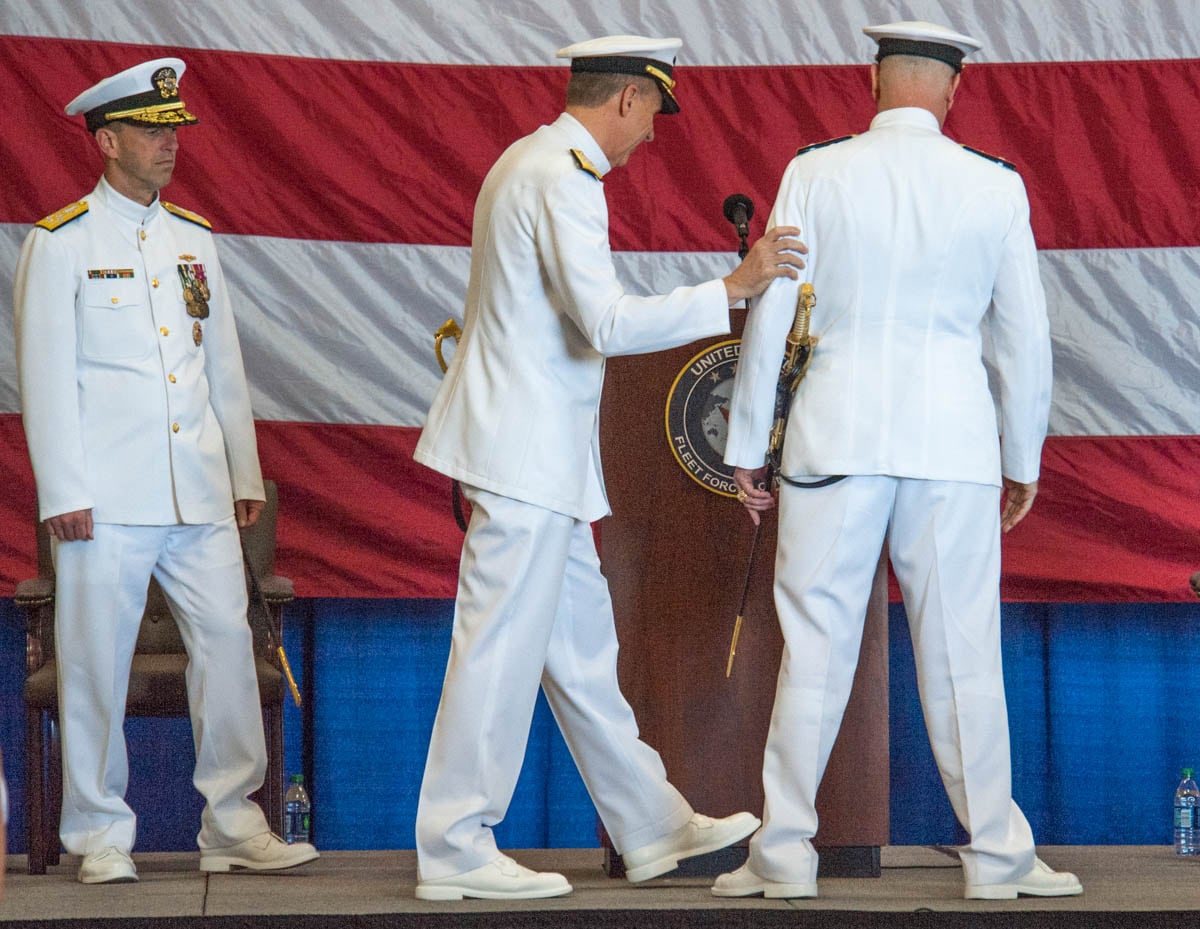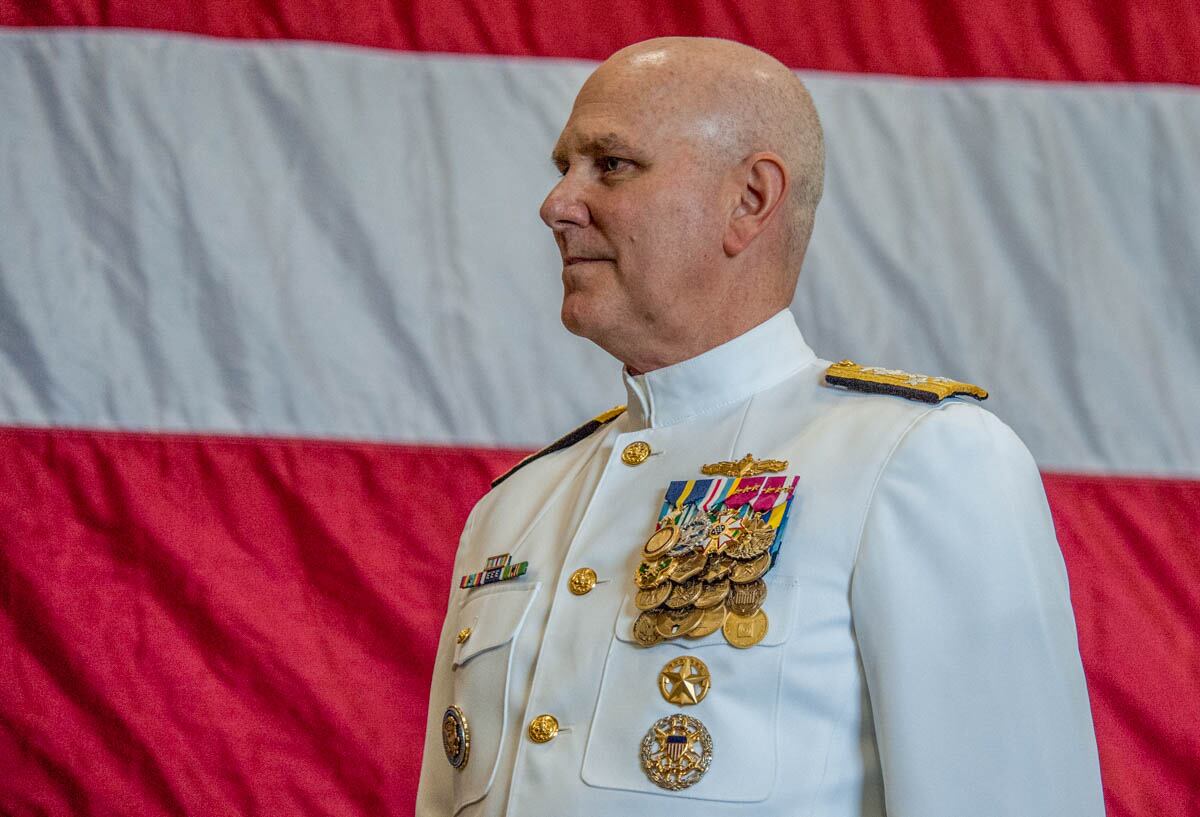NORFORLK, Va. ― A crowd of nearly 500 military and civilian guests on the hanger bay of the aircraft carrier George H.W. Bush May 4, watched as newly minted four-star Adm. Chris Grady relieved Adm. Phil Davidson as the leader of the Norfolk-based Fleet Forces Command.
Grady became the 42nd admiral to fill the post, which was originally formed in 1906 and was called the “Commander in Chief, U.S. Atlantic Fleet.”
The event was a true “hail and farewell” in the Navy tradition as Chief of Naval Operations Adm. John Richardson, the Navy’s top officer, paid tribute to Davidson’s tenure at FFC, which started in December 2014.
RELATED

“There’s no doubt that our Navy is more agile and lethal by virtue of our ability to connect, combine, and adapt in rapidly adaptable ways ― a direct result of [Adm. Davidson’s] keen creativity and intellect.”
Davidson, who now heads to Hawaii to lead the joint U.S. Pacific Command, said that he was leaving the job in the very capable hands of Grady.
“Your experience as a strike group commander, the surface type commander here in the Atlantic and as the 6th Fleet commander and commander, NATO striking and support forces, will pay great dividends here at U.S. Fleet Forces.”

“Our direction is clear, recently the secretary of Defense stated: ‘Everything we do must contribute to the increased lethality of our military,’ ” Grady said. “Given the man, train and equip mandate of Fleet Forces Command, we are uniquely positioned in this direction and will develop, generate and employ the Navy the nation needs.”
Grady said in his last job, he was a commander that benefited from the abilities of units deployed by FFC and vowed the command will maintain that standard under his watch.
“Readiness is our business and as the 6th Fleet commander, I can bear true faith and witness to the power that was the Fleet Forces machine in the units that came to fight in my [area of responsibility],” he said. “They were resolute, ready and lethal on arrival, they kept their cutlass sharp and they knew how to use it.”
Under his watch, he, too vowed that FFC will “keep our cutlass sharp as we deter and defend forward, no matter the adversary, whether they are venturesome competitors or have names like Harvey, Irma and Maria.”
Based in Norfolk, Fleet Forces Command organizes, mans, trains, maintains, and equips more than 125 ships, 1,000 aircraft, and 103,000 active-duty service members and government employees who develop fleet training requirements and policies needed to generate combat-ready Navy forces.
Mark D. Faram is a former reporter for Navy Times. He was a senior writer covering personnel, cultural and historical issues. A nine-year active duty Navy veteran, Faram served from 1978 to 1987 as a Navy Diver and photographer.





